
文献信息:
Cai Zucong*, Yun Xiaoyuan, Gu Baojing. Applying C:N ratio to assess the rationality of estimates of carbon sequestration in terrestrial ecosystems and nitrogen budgets. Carbon Research, 2022, 1(1): 2. https://doi.org/10.1007/s44246-022-00004-6
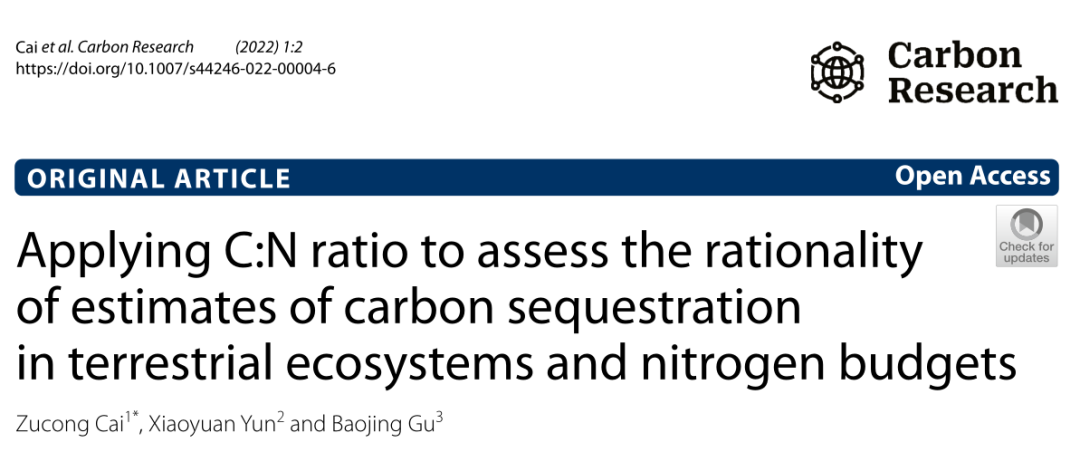
Carbon Research为Springer新刊,最新影响因子暂无。
Highlights:
An approach is proposed to extract Nr sequestrated with C in terrestrial ecosystems.
The lower ranges of global N budget in IPCC AR5 are rational.
C sequestration in Chinese terrestrial ecosystems is estimated to be 0.36 Pg C/yr in 2010.
摘 要:陆地生态系统中的碳(C)固存需要确保活性氮(Nr)的供应。然而,无论是在陆地生态系统碳固存的估算中,还是在区域和全球尺度上的氮收支估算中,都很少考虑有机碳氮比。本研究提出了一种从氮收支中提取陆地生态系统中与碳固存想结合的活性氮(称为Nrc)的方法,然后以陆地生态系统固存的有机碳氮比为标准,评估陆地生态系统碳固存和氮收支估算的合理性。本文从全球尺度上的IPCC AR5氮收支和区域尺度上的中国氮收支结果中提取了Nrc,主要基于以下假设:在年时间尺度上,农产品中没有净Nr累积,大气中没有净Nr(N2O除外)积累,N2O不参与生物过程。通过从IPCC AR5的碳收支中提取陆地生态系统中的碳固存量(2000-2009年期间为2.1 Pg C/yr)来评估同一报告中的氮收支,利用从IPCC AR5全球氮收支中Nr输入和输出的上限和平均值中提取的Nrc计算得到的有机碳氮比超出了有机碳氮比的合理范围,但是,利用从氮收支的下限提取的Nrc(68.1 Tg N/yr)计算得到的有机碳氮比(=31)非常符合全球陆地生态系统的有机碳氮比范围。2010年,从中国氮收支估算结果中提取的Nrc为11.6 Tg N/yr,通过应用全球陆地生态系统固存有机碳氮比进行计算,可得到中国陆地生态系统碳固存量范围为0.14–0.66 Pg C/yr,以有机碳氮比等于31进行计算,则中国陆地生态系统碳固存量估计为0.36 Pg C/yr。结果表明,本文提出的从氮收支中提取Nrc的方法效果良好,检验评估出的陆地生态系统有机碳氮比将有助于评估碳氮收支估算是否合理。
Abstract: Carbon (C) sequestration in terrestrial ecosystems needs to ensure the reactive nitrogen (Nr) supply. However, the organic C:N ratio is rarely considered in both estimates of C sequestration in terrestrial ecosystems and N budget at regional and global scale. Here we propose an approach for extracting Nr sequestrated in terrestrial ecosystems with C (termed as Nrc) from N budget and then assessing the rationality of estimates of C sequestration in terrestrial ecosystems and N budgets by using the sequestrated organic C:N ratio as a criterion. We extracted Nrc from the N budget of IPCC AR5 at global scale and Chinese N budget (Proc Natl Acad Sci (USA) 112:8792, 2015) at regional scale based on the assumptions that there is no net Nr accumulation in agricultural products and no net Nr (except N2O) accumulation in the atmosphere at annual temporal scale, and N2O is not involved in biological processes. By taking the C sequestration in terrestrial ecosystems from C budget of IPCC AR5 (2.1 Pg C/yr during 2000–2009) to assess the N budget from the same report, the organic C:N ratios calculated by the Nrc extracted from both the upper ranges and averages of Nr input and output in global N budgets of IPCC AR5 fell outside the rational range of organic C:N ratio, but the organic C:N ratio (=31) calculated by the Nrc (68.1 Tg N/yr) extracted from the lower ranges of the N budget fell very well into the range of organic C:N ratio in global terrestrial ecosystems. Nrc extracted from Chinese N budget was 11.6 Tg N/yr in 2010, which could be combined with C into Chinese terrestrial ecosystems in a range between 0.14–0.66 Pg C/yr with a robust estimate of 0.36 Pg C/yr by applying the global terrestrial ecosystem sequestrated organic C:N ratio to calculation. The results indicate that the proposed approach for extracting Nrc from N budget works well. Checking the estimated organic C:N ratio in terrestrial ecosystems will help to assess whether the C and/or N budgets are rational or not.
Graphical abstract:
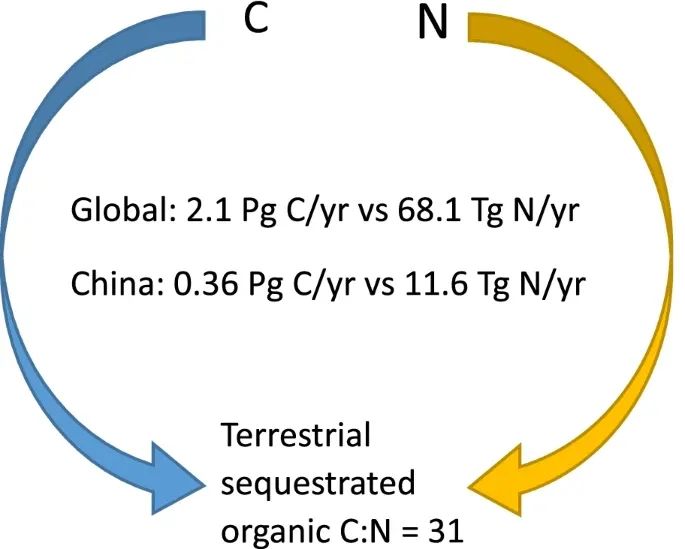
表 1 陆地生态系统土壤和植被中有机碳氮比
Table 1 Organic C:N ratios in soil and vegetation of terrestrial ecosystems
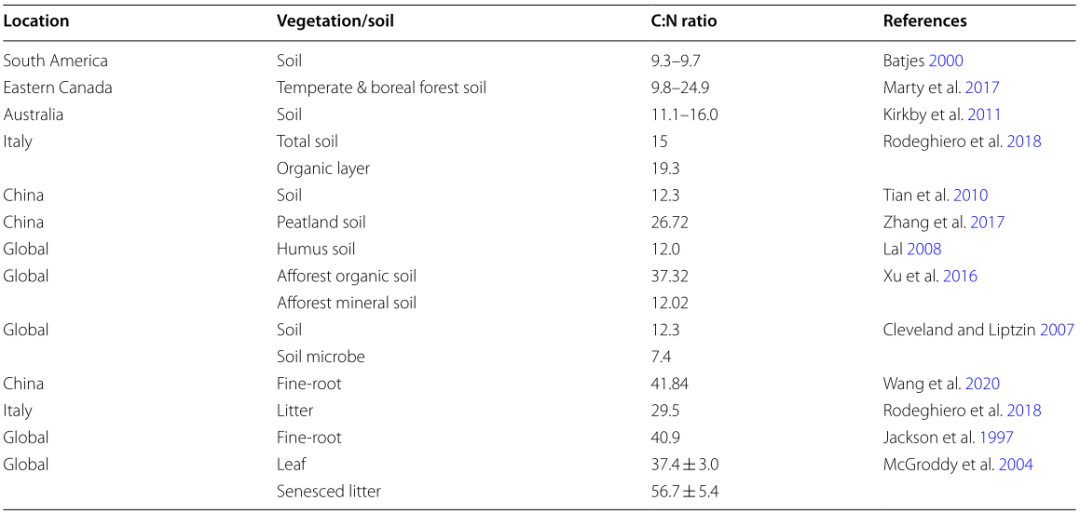
表 2 2000-2009年全球陆地生态系统大气CO2源和汇
Table 2 Atmospheric CO2 sources and sinks of global terrestrial ecosystems during the period from 2000 to 2009 (data cited from IPCC AR5, Ciais et al. 2013)

表 3 2000-2009年期间全球氮收支估算结果
Table 3 Global reactivated and deactivated nitrogen budget during the period of 2000–2009 (Data cited from IPCC AR5, et al. 2013)*
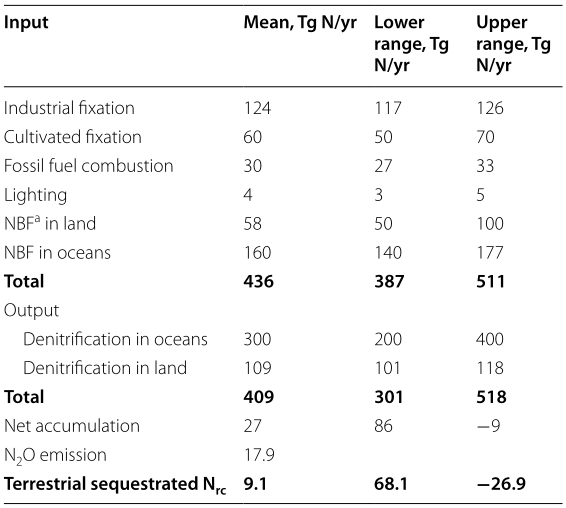
a NBF denotes nitrogen biological fixation
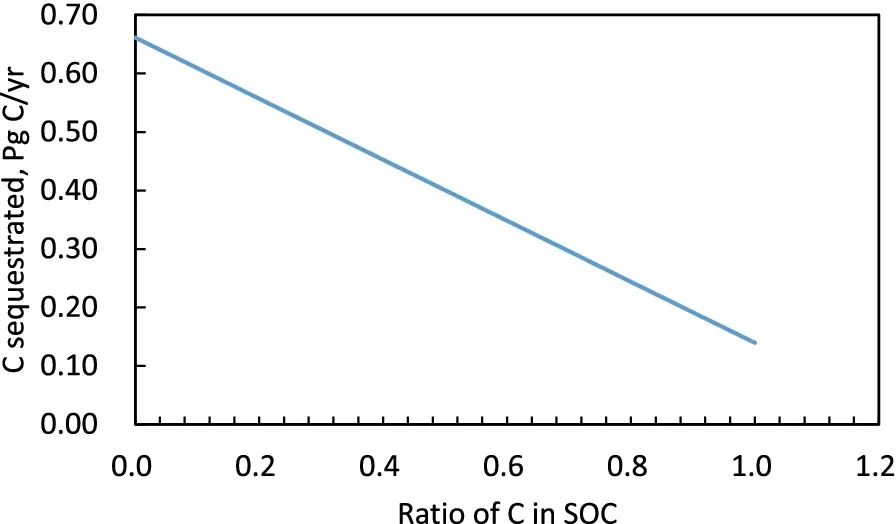
图 1 2010年中国陆地生态系统固碳量与土壤有机碳固存率间的关系
Fig. 1 The variation of carbon sequestration in Chinese terrestrial ecosystems with the ratio of carbon sequestrated into soil organic carbon (SOC) calculated based on soil organic C:N = 12 and vegetation C:N = 57, total sequestrated N = 11.6 Tg N in 2010, which is extracted from the N budget data of Gu et al. (2015)
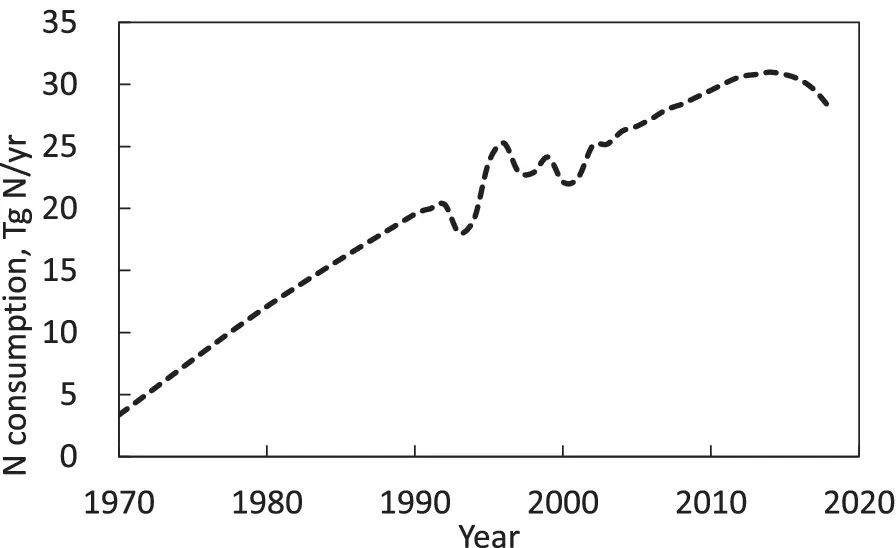
图 2 1970s至2018s中国氮肥消耗量随时间的变化
Fig. 2 Temporal variations of N fertilizer consumption in China from 1970s to 2018s. Data cited from FAOSTAT
原文链接:https://mp.weixin.qq.com/s/JJrZ9BcQR1hmZydEd-BmoA


